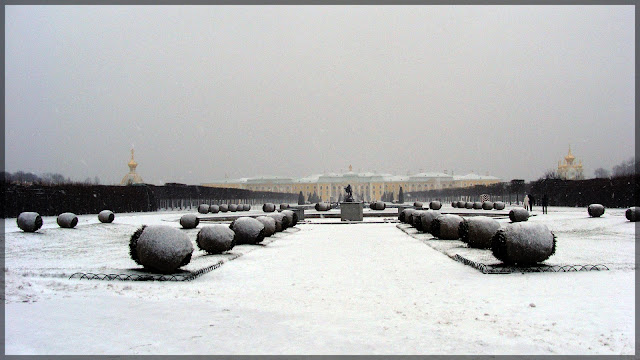 |
| Peterhof Grand Palace |
When
Elizaveta Petrovna ascended the throne (1741-61), St. Petersburg began to blossom. She adored all the luxury and adorned the city with new buildings. The style "Elizabethan Baroque" is characterized by an endless variety of decorative elements, its spatial extent and clarity of planning decisions, and beautiful and intense dynamics of plastic forms.
 |
| Fountain "Neptune" |
As a result of the work of the architect Francesco
Bartolomeo Rastrelli, the great master of the "Elizabethan Baroque" style, the imperial residences were erected in the city and its surroundings. Among them was the famous Winter Palace, as well as the Vorontsov and Stroganov palaces.
 |
| Church wing of the Grand Palace |
 |
| Parterre in the eastern wing. |
 |
| Church wing of the Grand Palace |
 |
| Peterhof Grand Palace |
 |
| Church wing of the Grand Palace |
 |
| building under the “State coat of arms” |
 |
| Peterhof Grand Palace |
 |
| Peterhof Grand Palace |
Between 1746-1752 Rastrelli renovated the Grand Palace in
Petergof. It slightly increased the size of the building, removed excessively colorful facades, joined the church, and added a wing under the arms.
 |
| Peterhof Grand Palace Grand Cascade |
The largest architectural feature of the Peterhof ensemble is the
Grand Palace. It holds a dominant position in the composition of the park since it crowns the Grand Cascade.
An elegant three-story building with galleries and sparkling gold domes at each end of its body, the distance between "the Church" and the building under the “State coat of arms” stretches along the facade of the garden for approximately 300 meters. The current appearance of the palace was created as a result of the construction and modifications that were made intermittently over two centuries.
 |
| Church wing of the Grand Palace |
 |
| Smolny Convent
|
The most significant buildings of the great architect were the new Winter Palace and the Smolny Convent. They were unequalled in their brilliance. Construction of a new palace continued until the death of Elizabeth. She had no time to settle there. Finally, Peter III entered the unfinished palace. Externally, the building has retained the old plan of the palace, as well as the old appearance.













.jpg)

good
ReplyDelete